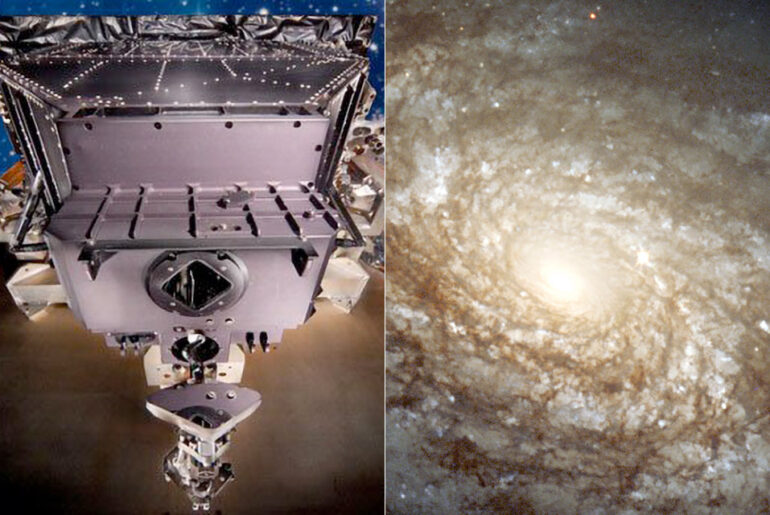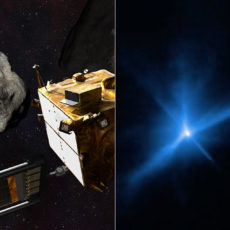
NASA / ESA’s Hubble Space Telescope observes a dusty spiral galaxy, classified as NGC 4414, located 60 million light-years from Earth in the constellation Coma Berenices. This unbarred spiral galaxy features short segments of spiral structure, yet lacks the dramatic well-defined spiral arms of a grand design spiral.

The image you see here was captured with Hubble’s Wide Field Planetary Camera 2 (WFPC2) through three different color filters.Key Project astronomers were able to make an accurate determination of the distance to the galaxy, based on their discovery and careful brightness measurements of variable stars in NGC 4414.
- Interactive model – Inspire kids to build a representation of the Earth, Sun and Moon in orbit with this LEGO Technic Planet Earth and Moon in Orbit...
- Educational space toy – Kids can turn the crank to see how the Earth and the Moon orbit around the Sun
- Includes months and moon phases – This solar system toy includes printed details, like the month and moon phases to help kids see how the Earth’s...
The new Hubble picture shows that the central regions of this galaxy, as is typical of most spirals, contain primarily older, yellow and red stars. The outer spiral arms are considerably bluer due to ongoing formation of young, blue stars, the brightest of which can be seen individually at the high resolution provided by the Hubble camera,” said the NASA Hubble Mission Team.













